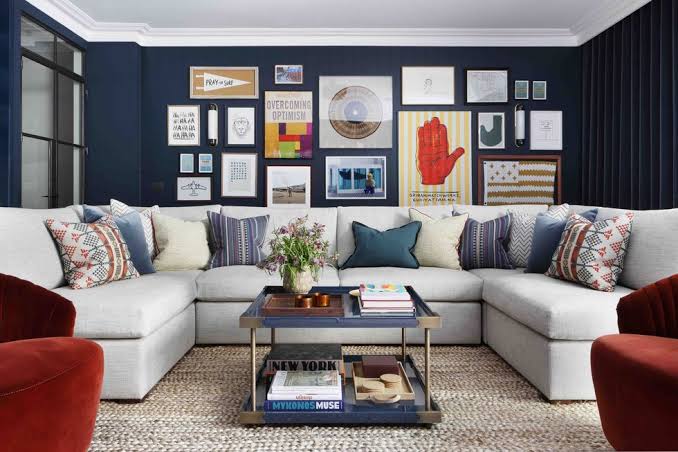The UK’s design industry is a beacon of creativity and innovation, attracting talent from all corners of the globe. From the bustling design hubs of London to the serene studios in the countryside, the UK offers a diverse and vibrant landscape for aspiring designers. Whether your passion lies in graphic design, fashion, interior design, or any other creative discipline, finding your place in this dynamic industry requires a blend of skill, strategy, and a touch of elegance. This article aims to provide a comprehensive guide to navigating the UK’s design world with authenticity and professionalism.
Understanding the UK Design Landscape
The UK design sector is one of the most diverse and influential in the world, contributing significantly to the economy. According to the Design Council, the design economy generated £85.2 billion in gross value added (GVA) to the UK in 2018, employing around 1.69 million people. The industry encompasses various sub-sectors, including:
- Graphic Design: Involves creating visual content for branding, advertising, and digital media.
- Fashion Design: Encompasses clothing, accessories, and footwear, with London Fashion Week being a global highlight.
- Interior Design: Focuses on enhancing the interior spaces of residential, commercial, and public buildings.
- Product Design: Involves creating new products or improving existing ones, blending functionality with aesthetics.
- Digital and UX Design: Centers on creating user-friendly digital interfaces and experiences.
Essential Skills and Qualifications
To succeed in the UK’s design industry, a combination of technical skills, creativity, and formal education is crucial. Key qualifications and skills include:
- Educational Background: A degree in design or a related field is often essential. Courses from reputable institutions like Central Saint Martins, the Royal College of Art, and the University of the Arts London can provide a strong foundation.
- Technical Proficiency: Mastery of design software such as Adobe Creative Suite, AutoCAD, and SketchUp is vital.
- Creativity and Innovation: The ability to think outside the box and bring fresh ideas to the table.
- Communication Skills: Effective communication with clients, team members, and stakeholders is crucial.
- Portfolio: A strong portfolio showcasing your best work is often more valuable than a CV.
Navigating the Job Market
Finding employment in the UK design industry can be competitive, but with the right approach, you can stand out. Here are some tips:
- Networking: Attend industry events, exhibitions, and seminars to meet potential employers and collaborators. Joining professional bodies like the Chartered Society of Designers (CSD) can also provide networking opportunities.
- Internships and Work Experience: Gaining practical experience through internships can be a stepping stone to full-time employment. Many design agencies offer internship programs that can provide valuable insights and connections.
- Freelancing and Contracts: Many designers start their careers as freelancers. Platforms like Upwork, Freelancer, and Behance can help you build a client base.
- Job Portals and Recruitment Agencies: Websites like Design Week Jobs, Indeed, and LinkedIn are excellent resources for job listings. Specialized recruitment agencies like Represent and Aquent focus on the creative sector.
Building a Personal Brand
In the design world, your personal brand is your calling card. Here’s how to build and maintain a strong personal brand:
- Online Presence: Create a professional website and maintain active profiles on social media platforms like Instagram, LinkedIn, and Behance. Regularly update these with your latest projects and insights.
- Consistency: Ensure that your brand’s visual elements (logo, color scheme, typography) are consistent across all platforms.
- Thought Leadership: Share your knowledge through blog posts, articles, and tutorials. Participating in webinars and workshops can also enhance your visibility.
- Client Testimonials: Positive reviews and testimonials from satisfied clients can build credibility and trust.
Staying Ahead in the Industry
The design industry is ever-evolving, with new trends and technologies emerging regularly. Staying ahead requires continuous learning and adaptability:
- Continuous Learning: Enroll in courses and workshops to keep your skills up-to-date. Online platforms like Coursera, Skillshare, and Udemy offer a wide range of design courses.
- Trend Analysis: Follow industry publications, blogs, and influencers to stay informed about the latest trends.
- Technology Integration: Embrace new technologies like augmented reality (AR), virtual reality (VR), and artificial intelligence (AI) that are shaping the future of design.
- Sustainability: With a growing emphasis on sustainability, understanding eco-friendly design practices can give you a competitive edge.
Conclusion
Finding your place in the UK’s design world is a journey that combines passion, persistence, and professionalism. By honing your skills, building a robust network, and continuously adapting to industry changes, you can carve out a successful and fulfilling career in this vibrant sector. Remember, elegance in employment is not just about aesthetics; it’s about the grace with which you navigate your professional journey, leaving a lasting impression on everyone you encounter.

















